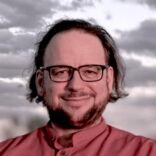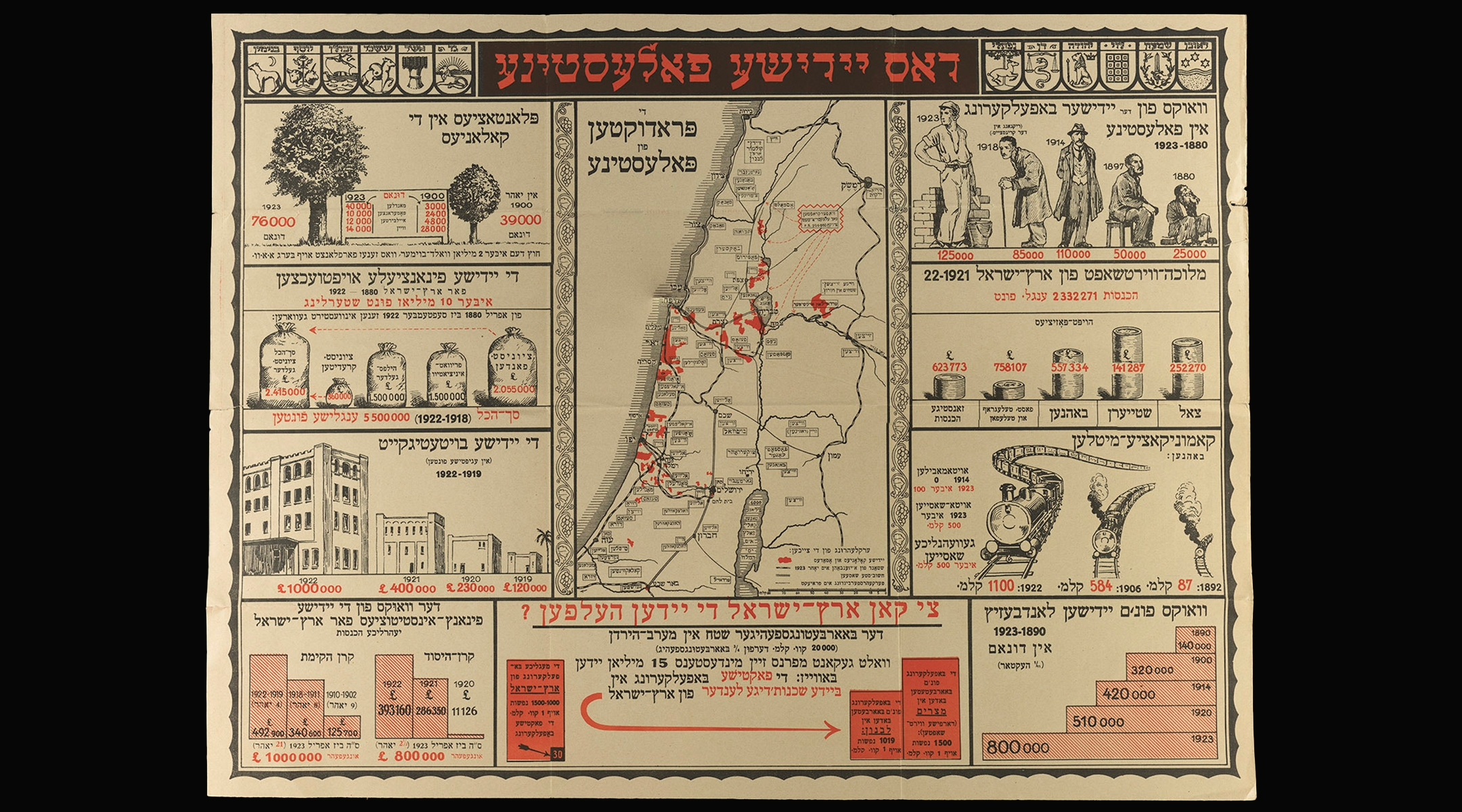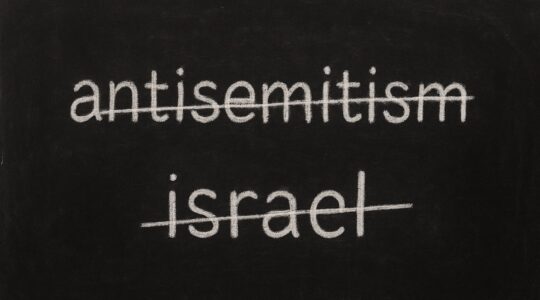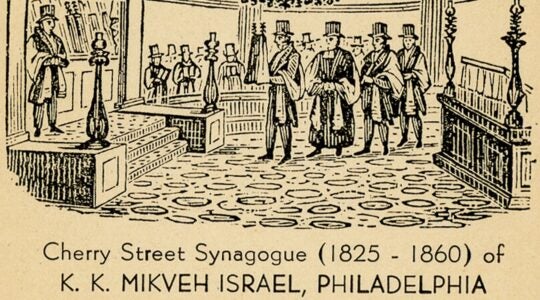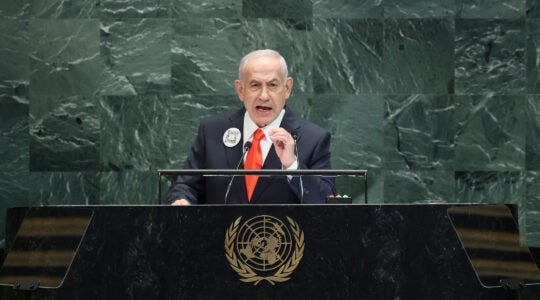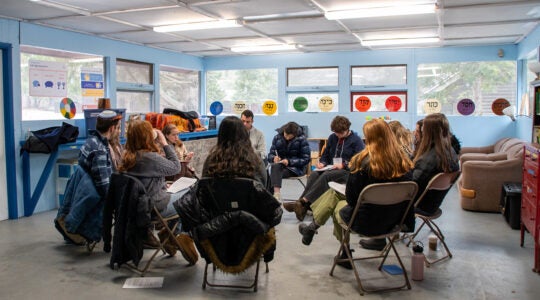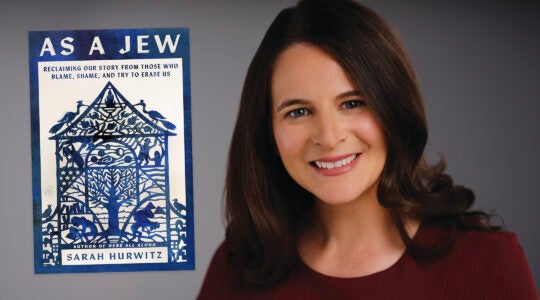(New York Jewish Week) — Just before the end of the second millennium, Ezer Weizman, then president of Israel, visited the University of Cambridge to familiarize himself with the famous collection of medieval Jewish notes known as the Cairo Genizah. President Weizman was introduced to the Regius Professor of Hebrew, who had been allegedly nominated by the Queen of England herself.
Hearing “Hebrew,” the president, who was known as a sákhbak (friendly “bro”), clapped the professor on the shoulder and asked “má nishmà?” — the common Israeli “What’s up?” greeting, which some take to literally mean “what shall we hear?” but which is, in fact, a calque (loan translation) of the Yiddish phrase vos hért zikh, usually pronounced vsértsəkh and literally meaning “what’s heard?”
To Weizman’s astonishment, the distinguished Hebrew professor hadn’t the faintest clue what the president was asking. As an expert of the Old Testament, he wondered whether Weizman was alluding to Deuteronomy 6:4: “Shema Yisrael” (Hear, O Israel). Knowing neither Yiddish, nor Russian (Chto slyshno), Polish (Co słychać), Romanian (Ce se aude) nor Georgian (Ra ismis) — let alone Israeli Revived Hebrew — the professor had no chance whatsoever of guessing the actual meaning (“What’s up?”) of this beautiful, economical expression.
At the beginning of the 20th century, Yiddish and Hebrew were rivals to become the language of the future Jewish state. At first sight, it appears that Hebrew has won and that, after the Holocaust, Yiddish was destined to be spoken almost exclusively by ultra-Orthodox Jews and some eccentric academics. Yet, closer scrutiny challenges this perception. The victorious Hebrew may, after all, be partly Yiddish at heart.
In fact, as the Weizman story suggests, the enigma of Israeli Revived Hebrew requires an exhaustive study of the manifold influence of Yiddish on this “altneulangue” (“Old New Language”), to borrow from the title of the classic novel “Altneuland” (“Old New Land”), written by Theodor Herzl, the visionary of the Jewish state.
Yiddish survives beneath Israeli phonetics, phonology, discourse, syntax, semantics, lexis and even morphology, although traditional and institutional linguists have been most reluctant to admit it. Israeli Revived Hebrew is not “rétsakh Yídish” (Hebrew for “the murder of Yiddish”) but rather “Yídish redt zikh” (Yiddish for “Yiddish speaks itself” beneath Israeli Hebrew).
That said, Yiddish had been clearly subject to linguicide (language killing) by three main isms: Nazism, communism and, well, Zionism, mutatis mutandis. Prior to the Holocaust, there were 13 million Yiddish speakers among 17 million Jews worldwide. Approximately 85% of the approximately 6 million Jews murdered in the Holocaust were Yiddish speakers. Yiddish was banned in the Soviet Union in 1948-1955.
It is high time that a Jewish institution address the issue of Zionism’s attempted linguicide against Yiddish. I am therefore delighted to hear about YIVO mounting a fascinating and multifaceted exhibition in Manhattan titled “Palestinian Yiddish: A Look at Yiddish in the Land of Israel Before 1948,” which opens today. I commend Eddy Portnoy, YIVO’s academic advisor and director of exhibitions, for an exquisite exhibition on a burning issue.
Characterized by the negation of the diaspora (shlilát hagalút) and continuing the disdain for Yiddish generated by the 19th-century Jewish Enlightenment, Zionist ideologues actively persecuted the language. In 1944-5 Rozka Korczak-Marla (1921-1988) was invited to speak at the sixth convention of the Histadrut, General Organization of Workers, in the Land of Israel. Korczak-Marla was a Holocaust survivor, one of the leaders of the Jewish combat organization in the Vilna Ghetto, Abba Kovner’s collaborator, and fighter at the United Partisan Organization (known in Yiddish as Faráynikte Partizáner Organizátsye).
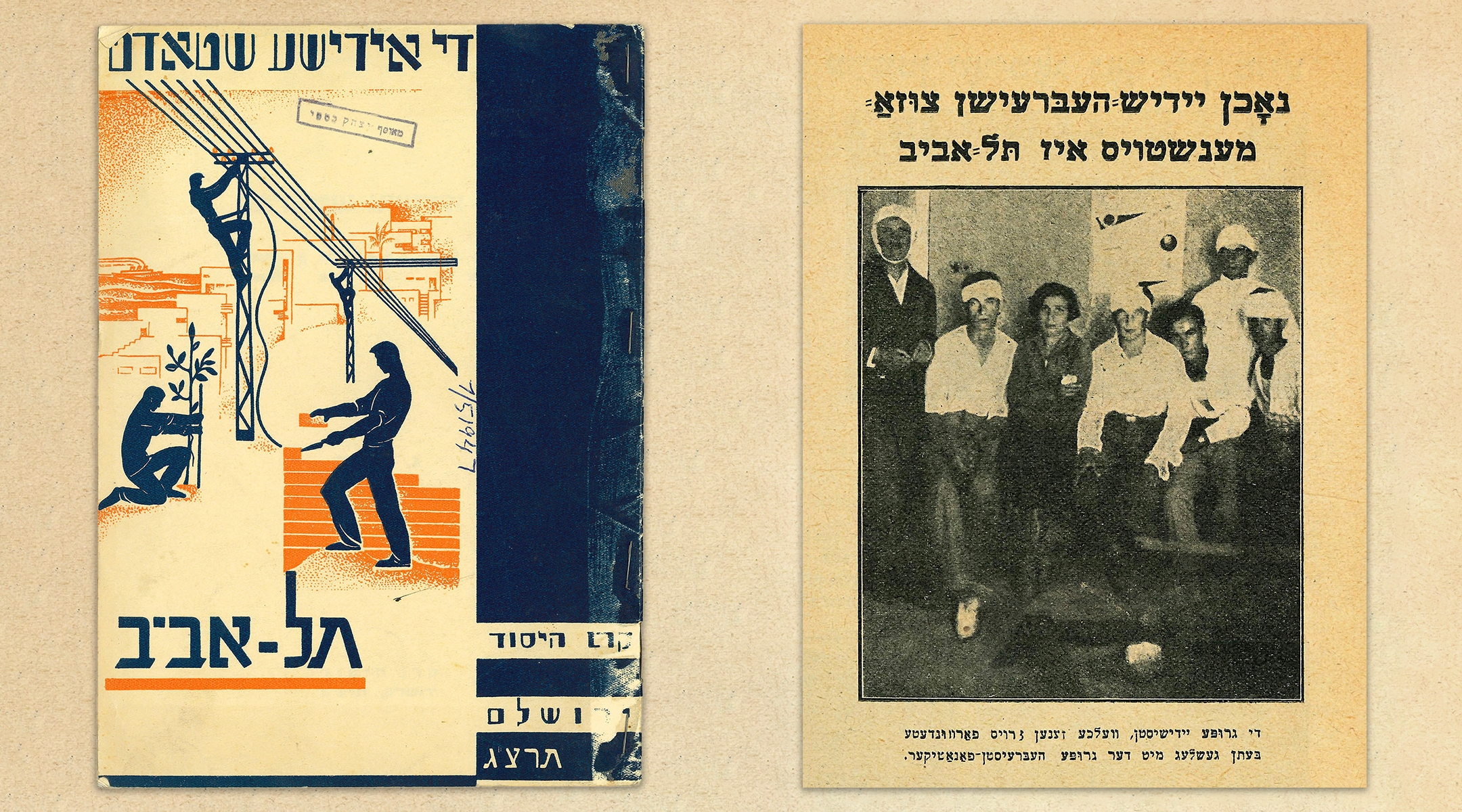
Left, “Di yidishe shtot Tel Aviv” (The Jewish City Tel Aviv), a Yiddish-language guidebook created by Keren Hayesod in Jerusalem, 1933. Right, wounded Yiddishists after an attack by Hebrew language fanatics, Tel Aviv, 1928. Ilustrirte vokh, Warsaw, Nov. 30, 1928. (YIVO Institute for Jewish Research)
She spoke, in her mother tongue Yiddish, about the extermination of Eastern European Jews, a plethora of them Yiddish speakers. Immediately after her speech she was followed on stage by David Ben-Gurion, the first general secretary of the Histadrut, the de facto leader of the Jewish community in Palestine and eventually Israel’s first prime minister. What he said is shocking from today’s perspective:
…זה עתה דיברה פה חברה בשפה זרה וצורמת
ze atá dibrá po khaverá besafá zará vetsorémet…
A comrade has just spoken here in a foreign and cacophonous tongue…
In the 1920s and 1930s, the Battalion for the Defense of the Language (Gdud meginéy hasafá), whose motto was “ivrí, dabér ivrít” (“Hebrew [i.e. Jew], speak Hebrew!), used to tear down signs written in “foreign” languages and disturb Yiddish theater gatherings. However, the members of this group only looked for Yiddish forms (words) rather than patterns in the speech of the Israelis who did choose to speak “Hebrew.” The language defenders would not attack an Israeli Revived Hebrew speaker uttering the aforementioned “má nishmà.”
Astonishingly, even the anthem of the Battalion for the Defense of the Language included a calque from Yiddish: “veál kol mitnagdénu anákhnu metsaftsefím,” literally “and on all our opponents we are whistling,” i.e., “we do not give a damn about our opponents.” “Whistling on” here is a calque of the Yiddish fáyfn af, meaning both “whistling on” and, colloquially, “not giving a damn about” something.
Furthermore, despite the linguistic oppression they suffered, Yiddishists in Palestine continued to produce creative works, a number of which are exhibited by YIVO.
Just like Sharpless, the American consul in Giacomo Puccini’s 1904 opera “Madama Butterfly,” “non ho studiato ornitologia” (“I have not studied ornithology”). I therefore take the liberty of using an ornithological metaphor: On one hand, Israeli Hebrew is a phoenix, rising from the ashes. On the other, it is a cuckoo, laying its egg in the nest of another bird, Yiddish, tricking it to believe that it is its own egg. And yet it also displays the characteristics of a magpie, stealing from Arabic, English and numerous other languages.
Israeli Revived Hebrew is thus a rara avis, an unusual and glorious hybrid.
The New York Jewish Week brings you the stories behind the headlines, keeping you connected to Jewish life in New York. Help sustain the reporting you trust by donating today.
